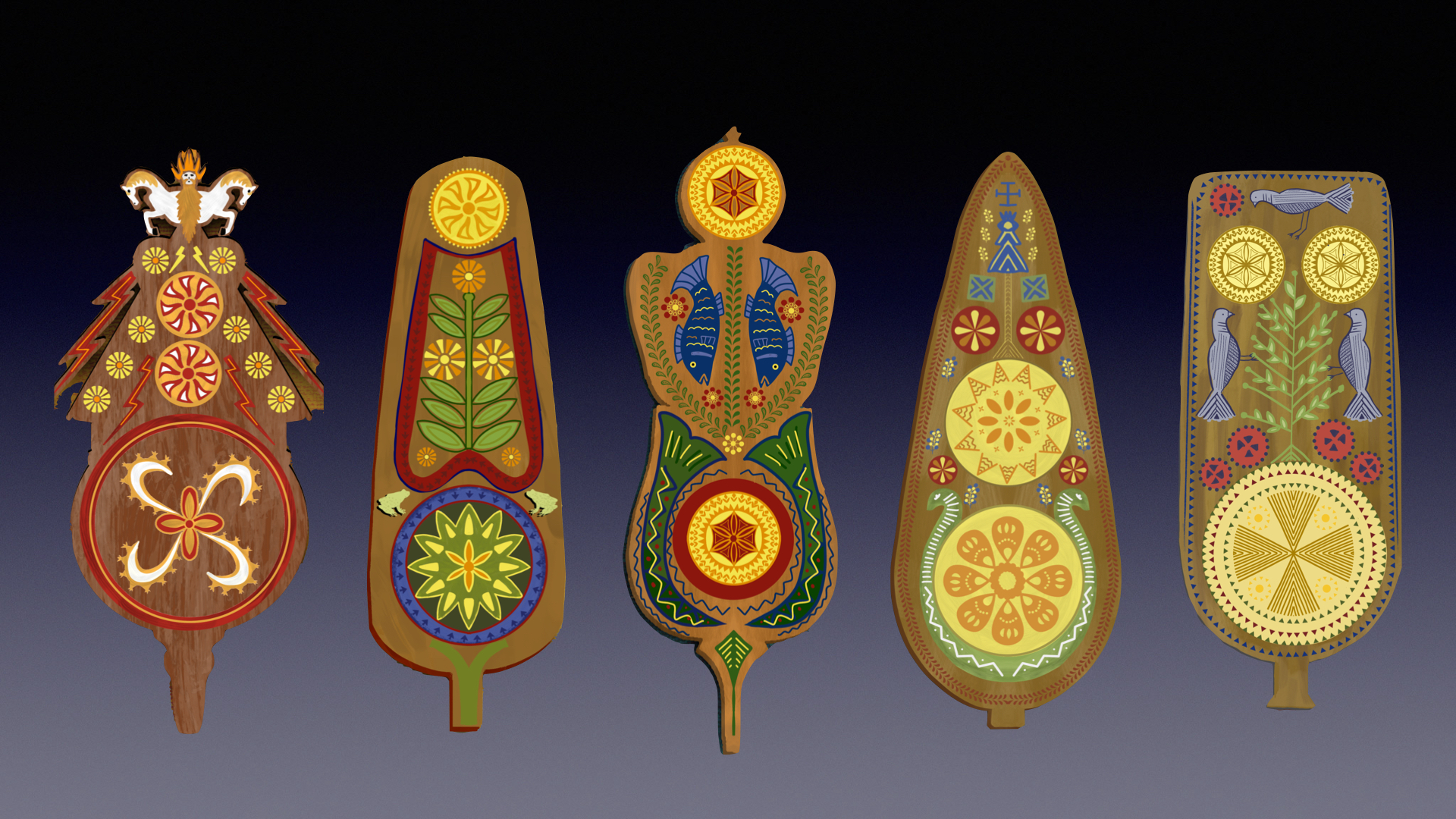
Lithuanian folk art is deeply embedded with symbolic motifs that reveal a profound respect for nature, spirituality, and ancient beliefs. Among these symbols, plants, trees, and flowers play a central role, connecting the human experience to the sacred forces of life and the natural world.
Not so long ago the Lithuanian countryside was dotted with beautifully ornamented wooden poles capped by roofs and crosses, whose symbols radiated brilliant sunlight. The landscape exuded religious spirit. These monuments, replete with ancient [pagan] symbols alongside the Christian, were highly characteristic representatives of Lithuanian folk art, expressing the people’s view of life and their ability in the field of artistic creation.
— from Ancient Symbolism in Lithuanian Folk Art
(American Folklore Society, 1958)

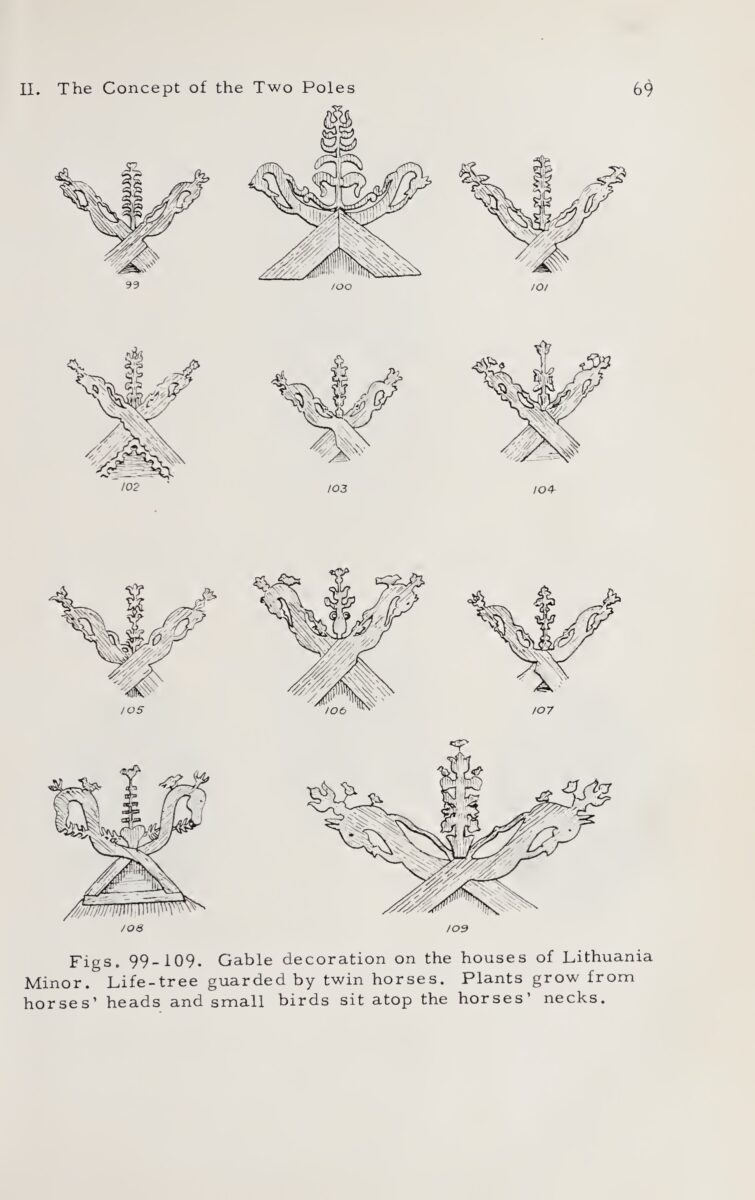
The Role of Plants and Trees in Lithuanian Folk Art
A deep respect for forests and trees was characteristic of the pagan religion of the Balts. Lithuanian folk art is profuse with plant motifs, which are described in detail by Marija Gimbutas in Ancient Symbolism in Lithuanian Folk Art.
Certain plants exhibit particularly vital symbolism, such as miraculous trees growing together from multiple stumps. The oak, linden, birch, ash, and spruce feature prominently as sacred or symbolic trees. For instance, two-stump trees are believed to possess healing powers even today. The fir tree (or pine) is another iconic symbol often used in Lithuanian folk art.
Gender Distinction in Plant Motifs
The plant world was symbolically divided by gender.
Interestingly, not all trees were identified as feminine.
- Masculine Trees: The oak, revered as the holy tree of Perkūnas (the thunder god), is the most masculine and iconic, frequently depicted with oak leaves. Oak wreaths were used to crown champions or honor their achievements.
- Feminine Trees: The linden and fir were considered feminine, symbolizing gentleness and nurturing qualities.
The sexual distinction extended to flowers:
- Feminine Flowers: Bell-shaped flowers, such as lilies, represented femininity.
- Masculine Flowers: Rosette-shaped flowers, clovers, flax blossoms, and sun-shaped flowers symbolized masculinity.
According to Gimbutas, blossoming flowers on dowry chests symbolized a bride’s wealth and future happiness.
Folk Art Applications of Plant Symbols
Lithuanian crosses often incorporate plant shoots forming sun discs, expressing vitality through designs of leaves, buds, and blossoms. Stylized plant motifs also adorn roof gables, wooden grave markers, textiles, and Easter eggs. These decorations hold deep symbolic meaning, often representing fertility, life force, or the cyclical nature of existence.

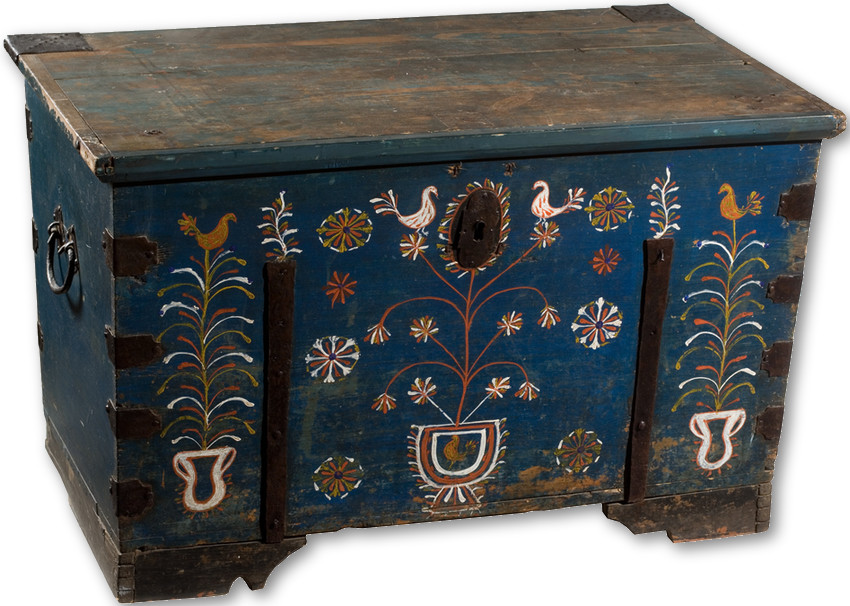
Painted Dowry Chests

Mittens by Donna Druchunas
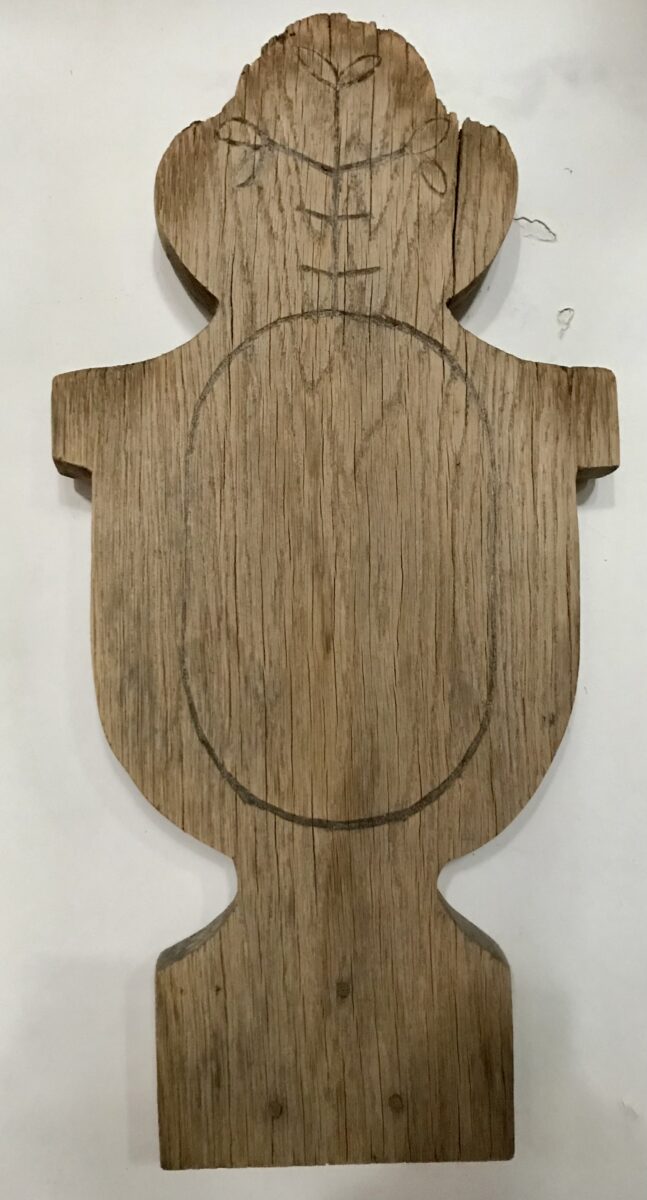
Grave marker from Nida, Lithuania
Easter Eggs and Symbolic Motifs
Easter eggs, regarded as objects of folk belief symbolizing the earth’s power, often display a range of plant motifs, from simple to intricate designs. The seminal work on Easter egg designs is a book by Antanas and Anastazija Tamošaitis, founders of the Lithuanian Folk Art Institute. For further details, see our page on Easter Eggs and a preview of the book.
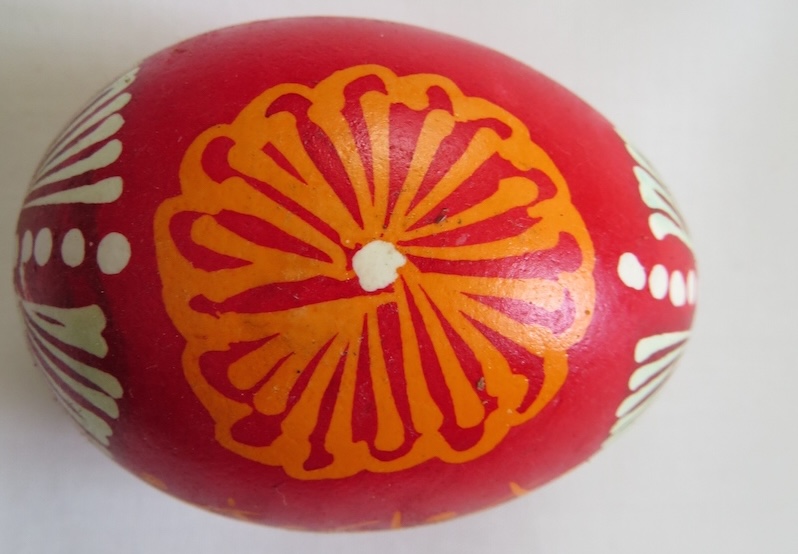

Universal Symbols in Lithuanian Art
Charts of ancient symbols, available online, provide insight into their universal and Lithuanian-specific meanings. For example:
- Rosette: Represents the circle of life or eternity.
- Crow’s Eye/World’s Belly Button: A rare and intriguing symbol.
- Stylized Horse Heads: Found on rooftop gables, they symbolize protection.
- Fir Tree and Serpent: Key elements in Lithuanian lore.

Gimbutas’ Contributions to Understanding Lithuanian Symbols
Maria Gimbutas’ scholarly work is unparalleled in interpreting Lithuanian folk art. Her book, though out of print, is available to view digitally at the Internet Archive. It is a treasure trove of religious philosophy and symbolism, offering insights into:
- Wooden crosses and their decorative elements.
- The interplay of male and female symbolic elements in folk art.
- The enduring struggle of early humanity to confront and resist evil through symbolic weapons and rituals.
Her research introduced Lithuanian prehistory and symbols to the English-speaking world, making her a vital figure in preserving and disseminating this heritage.
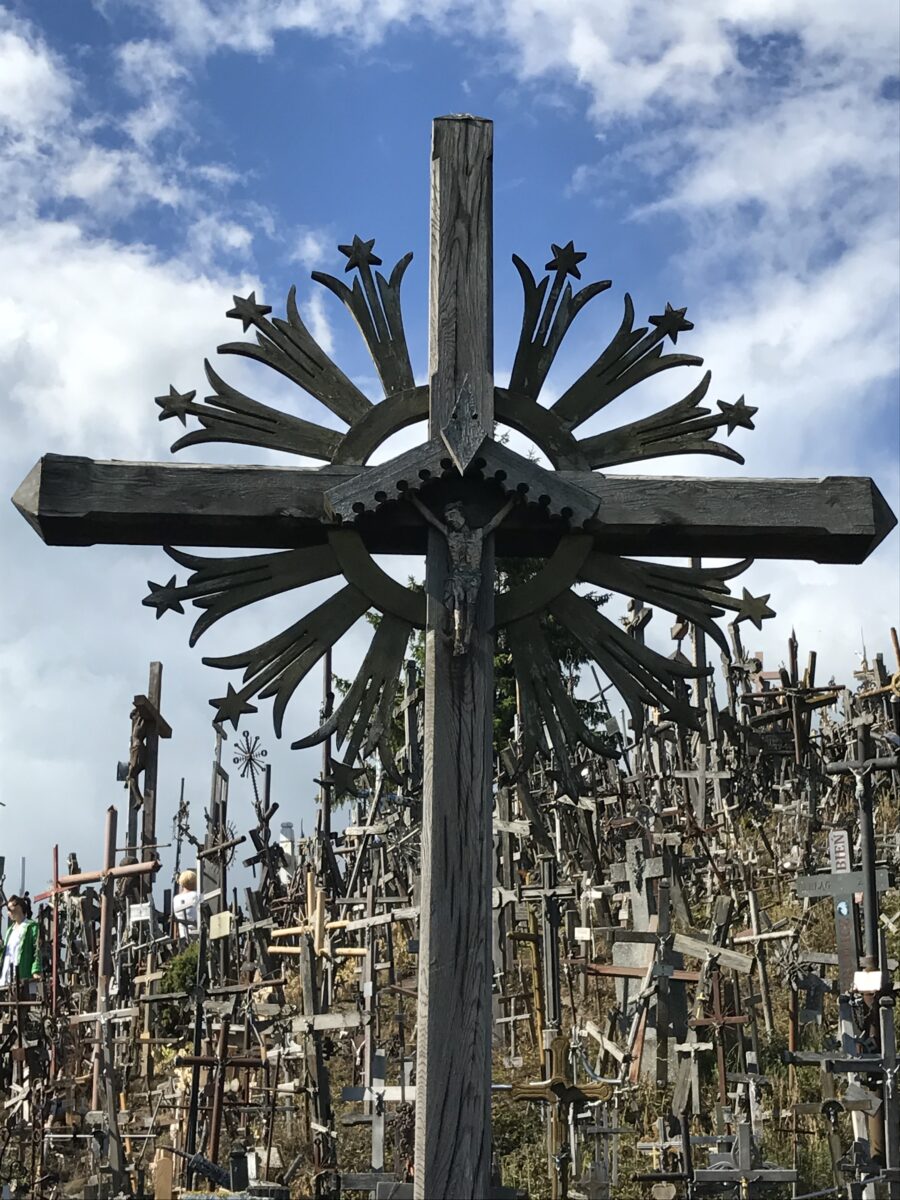
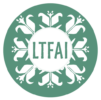
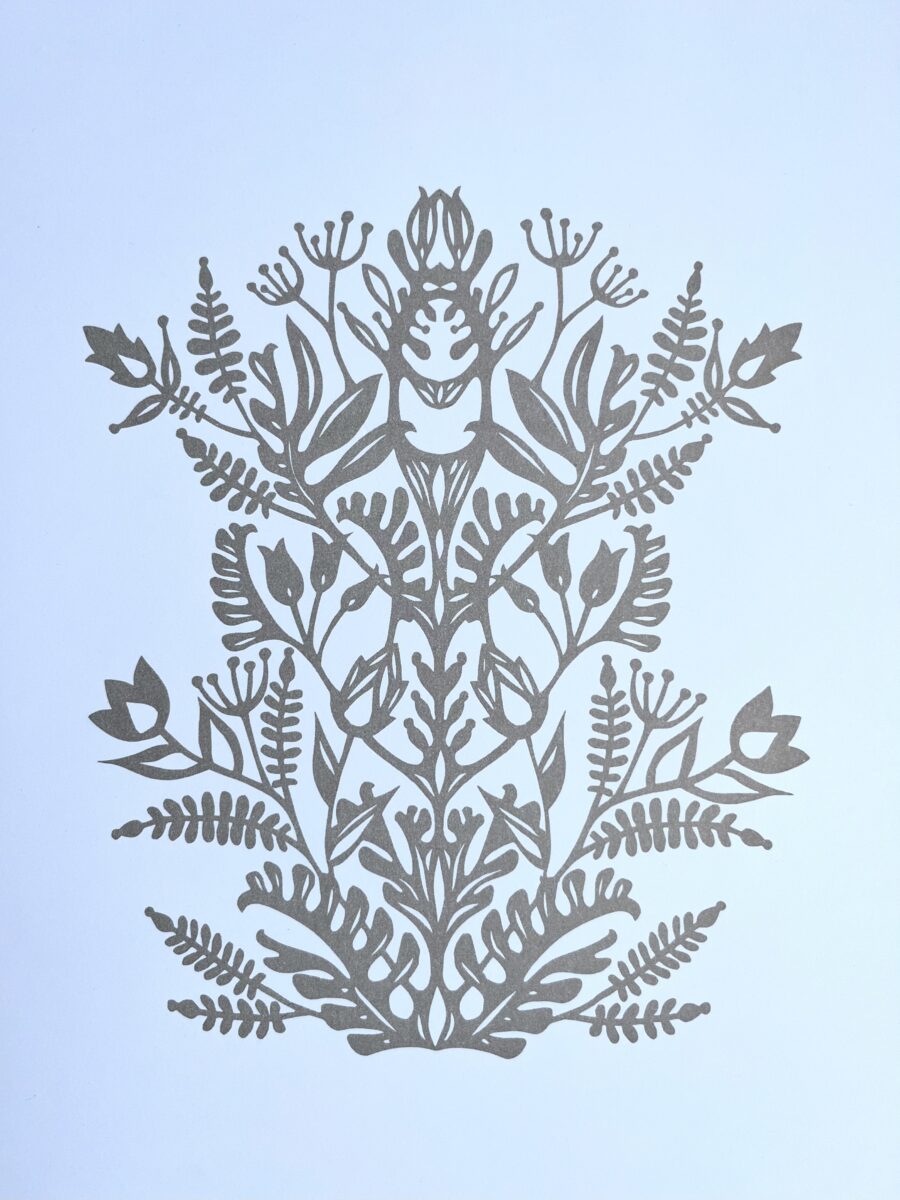
 An artisan specializing in knitting. She taught a knitting workshop at the LTFAI AGM several years ago and fell in love with the organization. Not only is she a prolific author of knitting books, with “The Art of Lithuanian Knitting” under her belt, but she’s also the creative genius behind our social media presence.
An artisan specializing in knitting. She taught a knitting workshop at the LTFAI AGM several years ago and fell in love with the organization. Not only is she a prolific author of knitting books, with “The Art of Lithuanian Knitting” under her belt, but she’s also the creative genius behind our social media presence.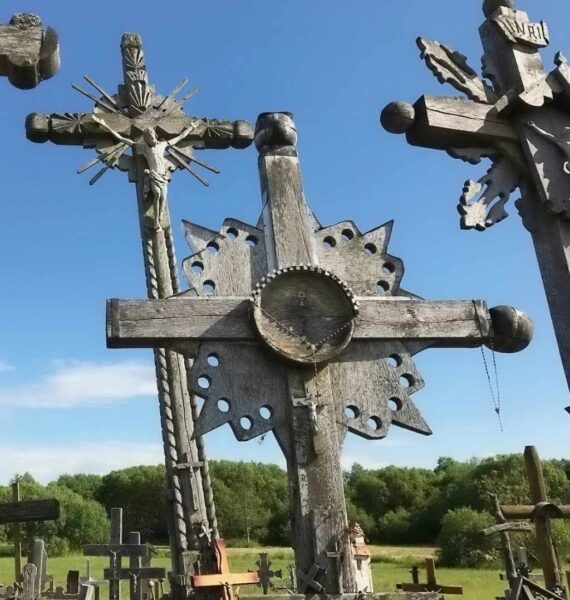
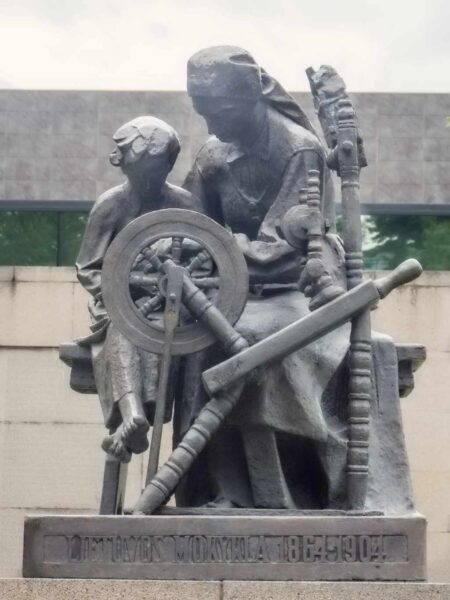
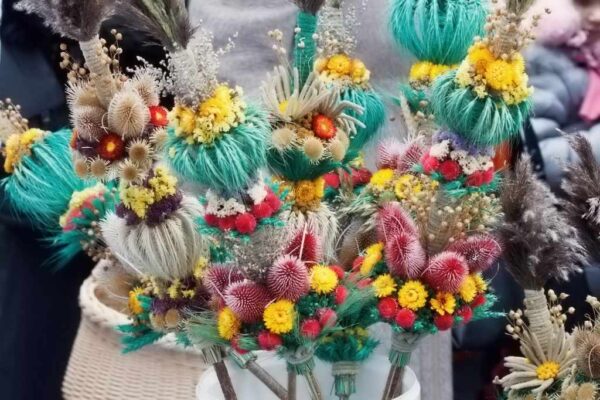
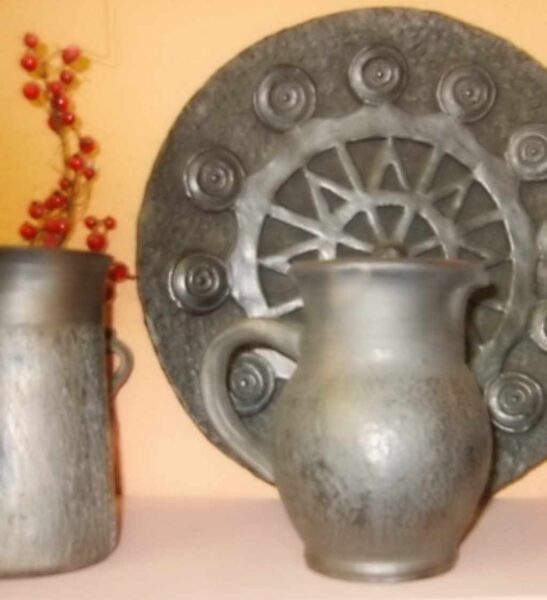
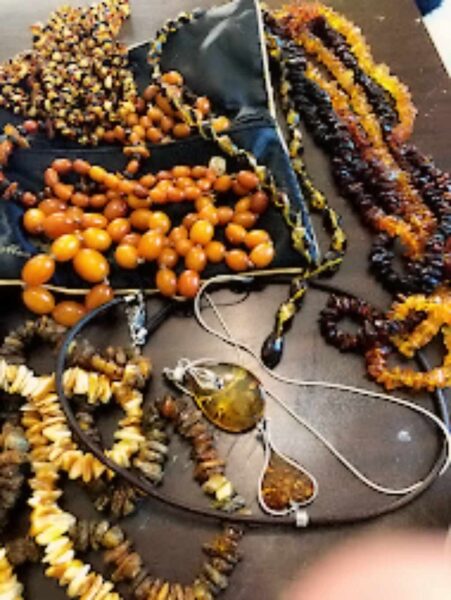

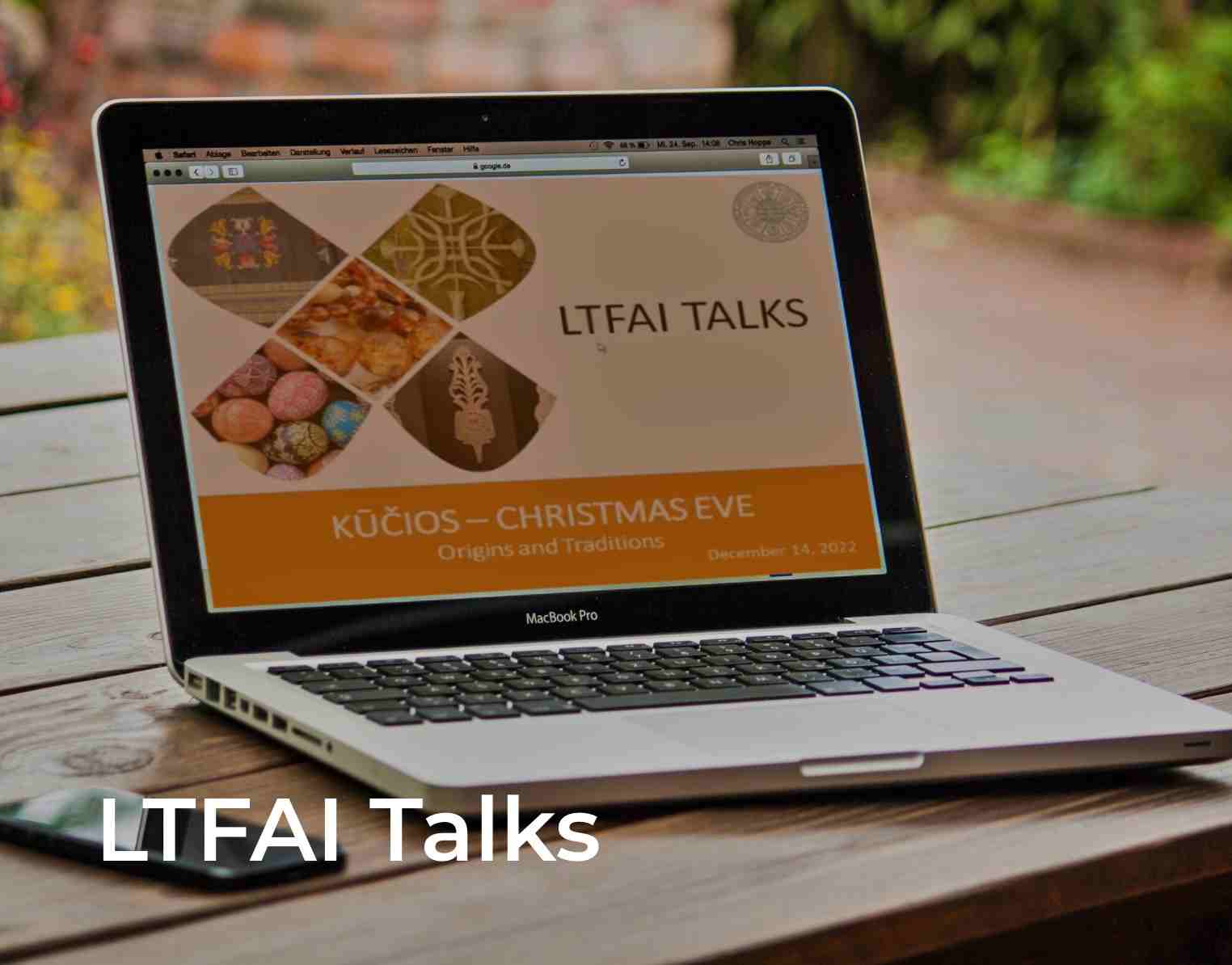

 Ramune is a translator and editor, who worked with the Canadian Lithuanian Weekly Tėviškės žiburiai as managing editor for over 20 years.
Ramune is a translator and editor, who worked with the Canadian Lithuanian Weekly Tėviškės žiburiai as managing editor for over 20 years.